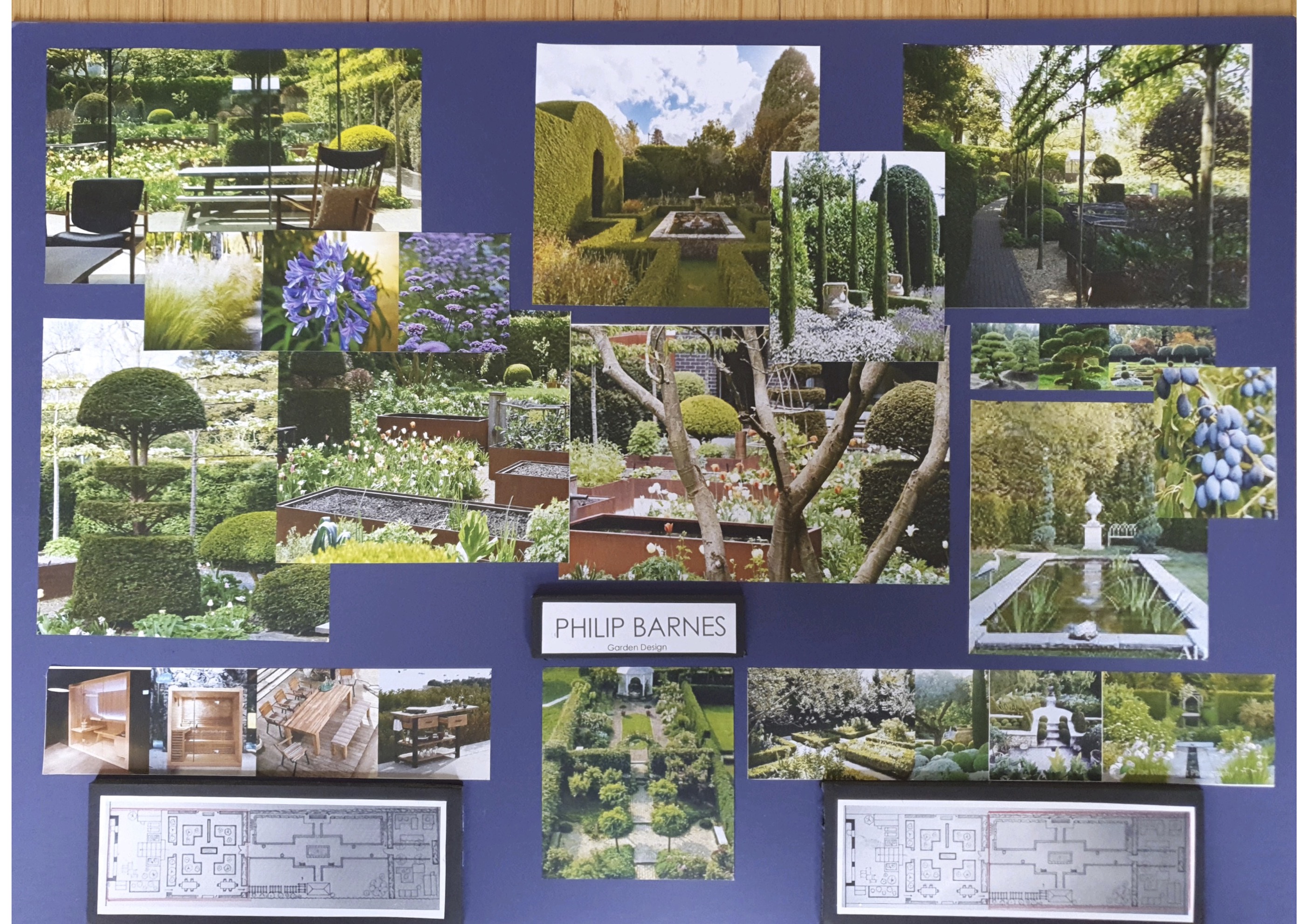We spoke with Philip Barnes about why he choose The English Gardening School, his experience on the course and what’s next for him…
What was your reason for doing the course?
I have always been interested in Gardens, as the General Manager at Sissinghurst Castle Garden for the National Trust, I have the privilege to explore the garden on a regular basis. The clever design and layout at Sissinghurst has always inspired me to learn more about Garden Design. During the recent pandemic I decided that I would enrol upon a Garden Design diploma in the future, having conducted some research I decided to go with the English Gardening School under the tuition of Rosemary Alexander. There seemed to be a real focus on the plants and how to incorporate them into the design, which very much appealed to me.
I wanted to increase my knowledge and understanding of garden design with a view to starting my own studio in the future. I met with Rosemary at the Chelsea Physic Garden, and I knew instantly that I would enjoy the course and learning within such an established and well recognised school.
The most useful subject you learnt on the course?
The entire course was thoroughly enjoyable, in particular I learnt a lot from the work on Plant portfolios, which helped improve my plant knowledge. Conducting site surveys prior to design was also extremely helpful in understanding what you need to know about a site before you get to the drawing board. Finally, the technical drawing skills were something that I really learnt the most about, how to take dimensions and objects and then create a design, which needs to meet the client requirements.
The guest lectures provided excellent insight, timed perfectly with the content being discussed each week, so relevant and helpful with the course work.
Advise you’d give future students?
Not to underestimate the amount of time that the course requires. Each element requires a great deal of thought and consideration, my weekends were spent researching suitable plants for the design and inking up my layout and planting plans. One piece of advice would be to find a friendly local printer who can respond quickly to your requests, time is critical as deadlines approach.
Another piece of advice would be to do some pre-reading, in particular Garden Design publications, alongside this visit gardens that inspire you as this helped a great deal when it came to working up concept drawings.
I am fortunate to have access to horticultural professionals, which was a great support as I worked through the course, speaking to gardeners always helps as they have such a wealth of experience and knowledge.
How would you describe your work / design aesthetic?
I am very much inspired by nature, I have taken a great deal of inspiration from reading William Robinson, The Wild Garden, I like the thought of creating a garden that is in harmony with its surroundings.
I have taken inspiration from gardens such as Great Dixter and Sissinghurst in terms of structure and like the ease in which formality and informality interplay.
A sense of place is important to me, so taking the surrounding materials and aesthetics and weaving them into the design settles the garden within the context of its surroundings, Dan Pearson and Arne Maynard do this so well, both have influenced my approach.
The plant choices in any design are so important and one reason for becoming a student with The English Gardening School is that a high proportion of the course is dedicated to plants, with exciting lectures from leading horticulturists and nursery owners.
Having worked for the Forestry Commission I have developed the skill of imagining what a garden may look like in 20 years’ time, so often we are all consumed with the design process and implementation that we often forget to slow down and consider how the garden will look when mature, I make sure that this element is not overlooked.
Since completing the course how has your work changed?
As a new garden designer I think the course will have influenced my approach in a number of ways. Firstly, the use of hard landscaping is something I would have always considered in detail, however, following the course my appreciation of the amount of detail required has been enhanced.
Working from a grid system so that the design aligns with the building is another element that I would now give further thought too, alongside how important the view from inside the house is looking out onto a garden.
My increased plant knowledge has broadened my plant choices and I think more about planting combinations, giving rhythm and repletion to borders and my understanding of structural planting and its importance has been heightened.
What are your future hopes for your career?
I am at the start of my garden design career and have some great people supporting me. I have learnt so much on the Garden Design Diploma course and keen to start with some new commissions. I have become a pre-registered member of the Society of Garden Designers and everyday I am learning something new.
My passion for gardens has just got stronger and whilst working at Sissinghurst I intend to start up a Garden Design studio and work on a limited number of gardens in the first few years where I can further develop my skills.
If you are thinking of starting the Garden Design diploma and would like to discuss the course with me, or if you would be interested in discussing a future commission, then contact me at philipbarnes1@aol.com you can follow me on Instagram @philipbarnes7
To find out more about the Essential Garden Design Diploma please click here or alternatively please contact us on info@englishgardeningschool.co.uk
Below is some of Philip’s work completed whilst on the course:

